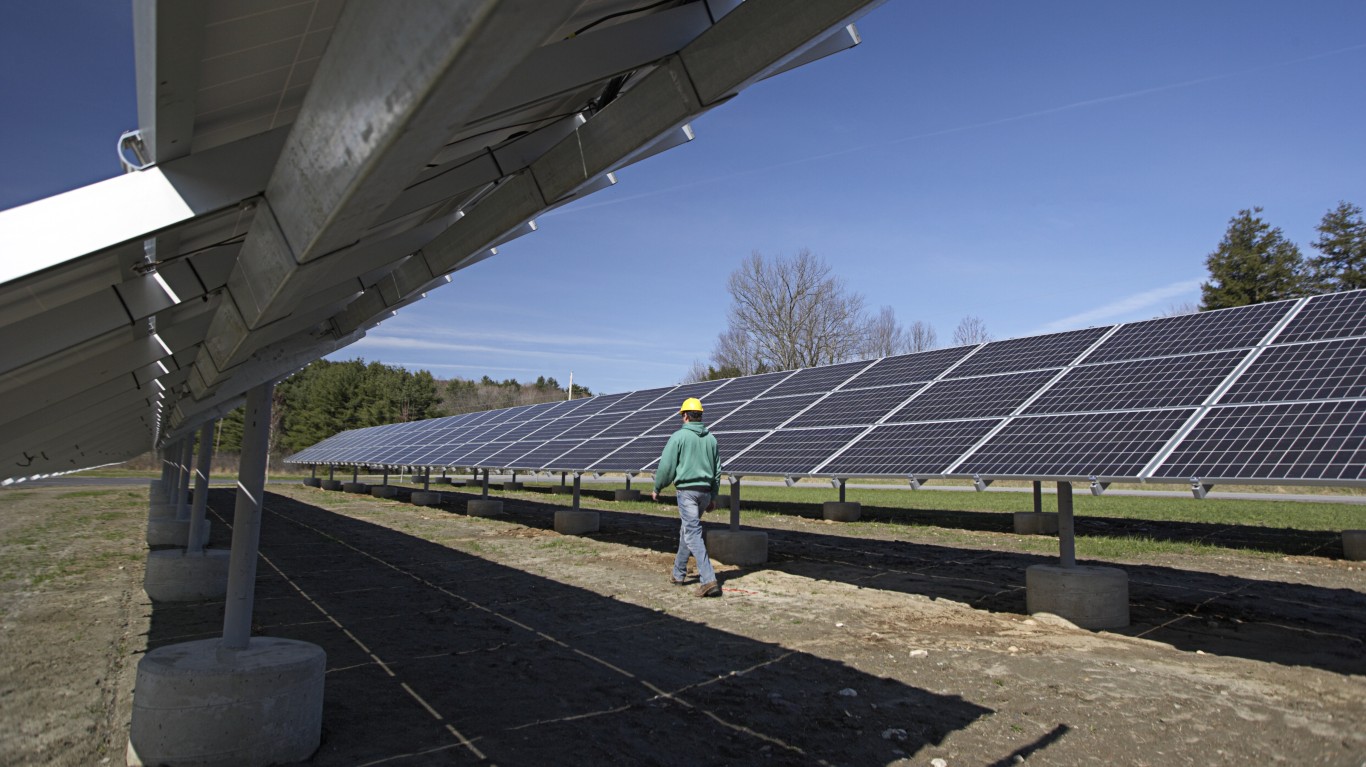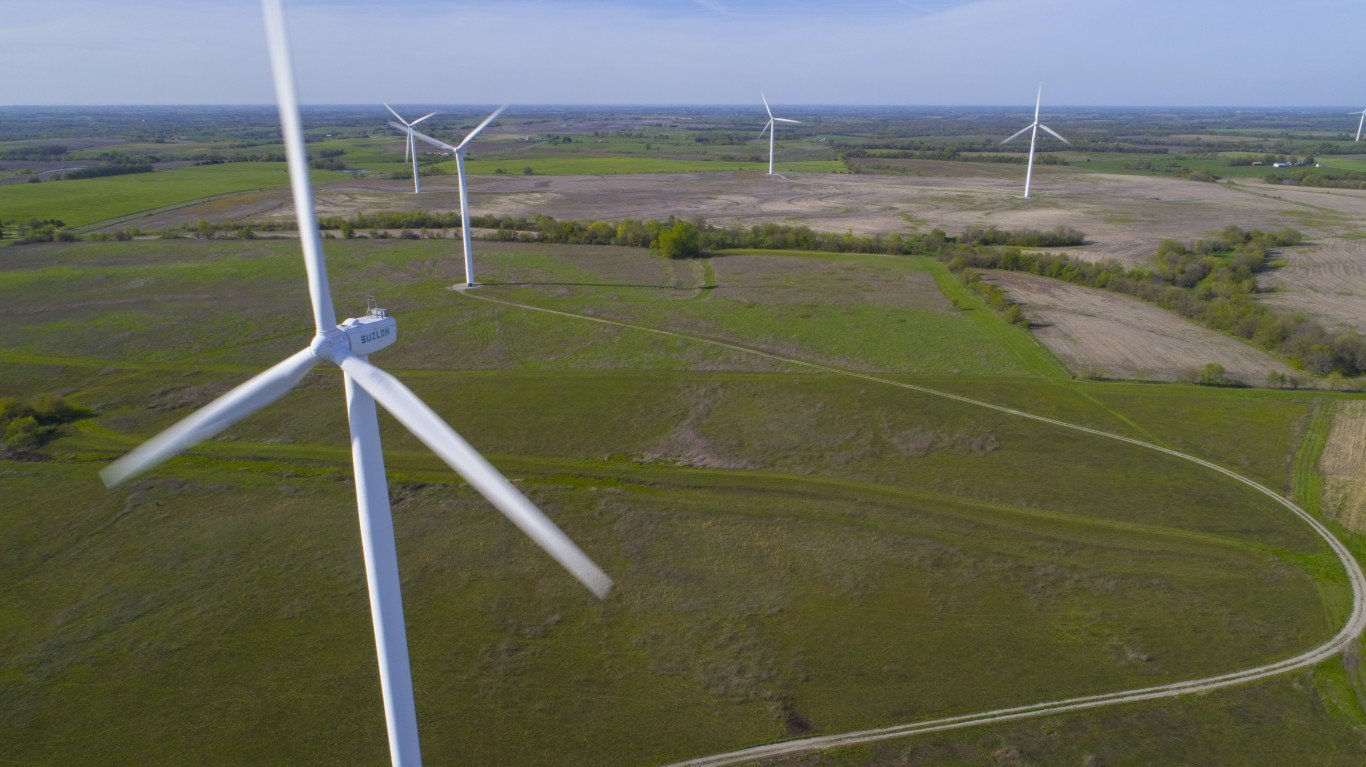
38. Vermont
> Potential jobs created under Inflation Reduction Act in 2030: 1 for every 297 people (2,178 total)
> Potential new jobs as a share of current unemployed population: 24.1%
> Unemployed population in 2022: 9,038 (2.6% of labor force)
> Energy-related carbon dioxide emissions in 2021: 8.6 metric tons per person (41.8% lower than avg.)

37. Missouri
> Potential jobs created under Inflation Reduction Act in 2030: 1 for every 297 people (20,848 total)
> Potential new jobs as a share of current unemployed population: 27.1%
> Unemployed population in 2022: 76,939 (2.5% of labor force)
> Energy-related carbon dioxide emissions in 2021: 19.0 metric tons per person (28.1% higher than avg.)

36. New Mexico
> Potential jobs created under Inflation Reduction Act in 2030: 1 for every 297 people (7,179 total)
> Potential new jobs as a share of current unemployed population: 18.8%
> Unemployed population in 2022: 38,155 (4.0% of labor force)
> Energy-related carbon dioxide emissions in 2021: 21.7 metric tons per person (46.5% higher than avg.)

35. Kansas
> Potential jobs created under Inflation Reduction Act in 2030: 1 for every 296 people (9,978 total)
> Potential new jobs as a share of current unemployed population: 24.9%
> Unemployed population in 2022: 40,098 (2.7% of labor force)
> Energy-related carbon dioxide emissions in 2021: 20.3 metric tons per person (37.4% higher than avg.)

34. Arkansas
> Potential jobs created under Inflation Reduction Act in 2030: 1 for every 295 people (10,271 total)
> Potential new jobs as a share of current unemployed population: 22.6%
> Unemployed population in 2022: 45,418 (3.3% of labor force)
> Energy-related carbon dioxide emissions in 2021: 20.5 metric tons per person (38.4% higher than avg.)





